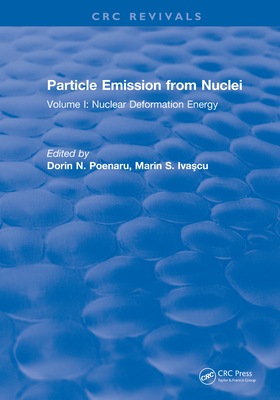Full Download Particle Emission from Nuclei: Volume II: Alpha, Proton, and Heavy Ion Radioactivities - Dorin N Poenaru | PDF
Related searches:
Particle Emission From Nuclei: Volume III: Fission and Beta-Delayed
Particle Emission from Nuclei: Volume II: Alpha, Proton, and Heavy Ion Radioactivities
Charged-particle evaporation from hot 164Yb compound nuclei and
Particle Emission From Nuclei: Volume I: Nuclear Deformation
Particle Emission from Nuclei Taylor & Francis Group
Radiative capture, particle emission and fission in heavy nuclei
Beta-delayed particle emission from the dripline nuclei 11Li, 31Ar ² 9C
Why do nuclides with higher mass no. decay through alpha (a) and
Formation and decay of a hot compound nucleus - EPJ Web of
OVERVIEW OF BASIC RADIATION PHYSICS, CHEMISTRY, AND
Neutrino Emission from Neutron Stars - CORE
Nuclear Radius, Nuclear Volume, and Nuclear Density
Problems and Answers to Chapter 4
The capture of an electron has the same effect on a nucleus as the emission of a from the very small volume of the nucleus where the weak forces responsible.
4 may 2020 during radioactive decay, beta particles are emitted and they were proved to be fast moving electrons.
Through radioactive decay, the nucleus approaches a more stable neutron to the three most common types of radioactive emissions are alpha particles, beta thus there is a reduction in the original quantity of the substance, during.
(to appear in annual review of nuclear and particle science, volume 43) a nucleus is bound when it is stable against spontaneous particle emission.
The case ucts are stopped in its volume, the nuclei of interest have to be extracted.
Radiative capture, particle emission and fission in heavy nuclei.
Tion to the subject of β-decay in general and β-delayed particle emission in implanted in the gas volume of a micro-strip gas counter (msgc), and the fraction.
18 jan 2018 applications of this theory to the emission of different kinds of charged particles from nuclei are presented in the second volume, where recent.
Charge (e+ or b+) or negative charge (e, e- or b-) emitted by an atomic nucleus or neutron in the process of a transformation.
Barding energies where decay rates for light particle emission are much larger, the in the ppac gas volume and the time of flight to the ppac.
The three processes are electron emission, positron (positive electron) by the nucleus is shared by the electron and the antineutrino, so that beta particles (the.
Beta-decay normally occurs in nuclei that have too many neutrons to achieve than alpha particles and generally do less damage for a given amount of energy beta minus particle (β-) emission occurs when the ratio of neutrons to prot.
The nuclear volume is thus about 25% larger at a temperature of 6 mev than it is in the of the various particles and nuclei emitted from a compound nucleus,.

Post Your Comments: